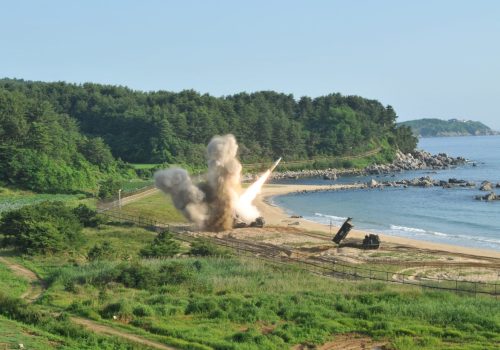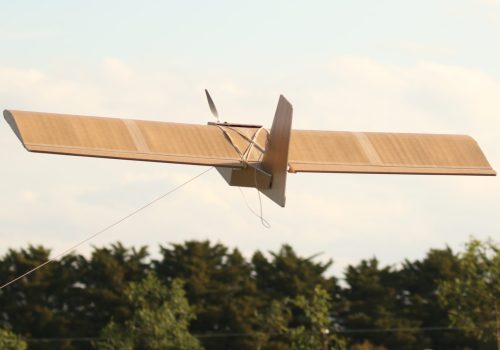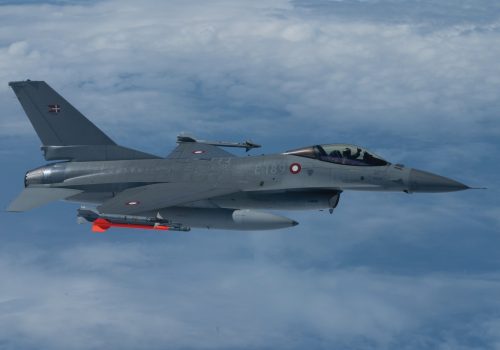Will Zelenskyy’s Washington visit help deliver ATACMS for Ukraine?
Ukrainian President Volodymyr Zelenskyy’s trip this week to New York and Washington is just the latest twist in a flurry of contacts between the United States and Ukraine this summer. Zelenskyy met with US President Joe Biden at the NATO summit in Vilnius, Lithuania, in July and hosted Secretary of State Antony Blinken in Kyiv two weeks ago. What explains this constant engagement and particularly Zelenskyy’s trip to the US capital this week?
The interaction between the two presidents and their chief advisers is constant because Moscow’s aggression in Ukraine and the threat it poses to core US interests in Europe and beyond is the number one issue on the US president’s national security agenda. At least intuitively, the Biden administration understands that its foreign policy legacy hinges on ensuring that Moscow does not succeed in subduing Ukraine. The specific question in July for the interaction between Biden, Zelenskyy, and their teams, tied to the NATO Summit, was Ukraine’s relationship with NATO. The topic now—ongoing since June—is the state of Ukraine’s counteroffensive. On background and on the record, commentators and administration officials over the past two months have been all over the map, at times expressing disappointment and concern with Ukraine’s progress, but also suggesting that there have been increasing gains and that the prospect of a breakthrough is growing.
Ukraine naturally wants the big breakthrough sooner, and the arms to make it happen.
These varying assessments have a surreal element. Given the months Moscow had to prepare its defenses for the Ukrainian assault, and the ongoing reluctance of the White House to provide the more advanced weapons Ukraine needs to increase the odds of success (F-16s and the long-range fires such as Army Tactical Missile Systems—ATACMS), a major Ukrainian advance that would break Moscow’s land supply corridor to Crimea was not likely. This means that the hand-wringing over the missing breakthrough was not grounded in sound military analysis or fact.
The most one could have expected was a modest advance based on Ukraine’s ability to outmaneuver the sluggish and unmotivated Russian forces. And Ukraine has already achieved that, liberating more than three hundred square kilometers by late July and a good bit more since then. Ukraine is also threatening to encircle Russian forces in Bakhmut in the northeast and is approaching Tokmak in the south. If they can move another twenty kilometers south, Ukrainian forces could greatly restrict Russian supply delivery. In addition, Ukraine has hit two Russian S-400 air defense systems, a submarine, and an amphibious assault ship in Crimea. These are notable gains, but far from decisive.
Ukraine naturally wants the big breakthrough sooner, and the arms to make it happen. And that is likely what has attracted Zelenskyy’s interest in visiting Washington. In June, the Ukrainian president took a diplomatic swing through Europe in the effort to persuade NATO to provide the long-sought F-16s. At the time, he thought that he had made the case, and the press was full of reports that F-16s would soon be on offer. That turned out to be not quite the case. It was only a few weeks ago that the Biden administration gave the go-ahead to permit Ukrainian pilots to train on the jets. This suggests that the F-16s might make it to Ukraine in the first quarter of 2024, at the earliest—well past this offensive. Zelenskyy is hunting for a different weapons system on this trip.
Since Blinken’s stop in Ukraine, there have been reports that ATACMS might be on the table. This long-range missile, which can deliver a powerful, accurate strike at three hundred kilometers, would put Crimea’s Kerch Bridge at risk. It would also make vulnerable the bases in Crimea from which Moscow has been pummeling Ukrainian cities with Iranian drones, and many supply bases and command posts well beyond the front lines in occupied Ukraine.
Zelenskyy is still likely to seek some indication from the White House that ATACMS remain on the table.
But since then, other issues related to Ukraine—such as funding future US aid—have intervened. Quasi-isolationists in Congress have put this on the agenda amid a government spending fight. This makes a decision this week to send ATACMs less likely. Zelenskyy is still likely to seek some indication from the White House that ATACMS remain on the table; but this will probably play out behind closed doors. This means that the public face of this summit should be harmonious.
It also places stress on Zelenskyy’s outreach to Congress, the other important item on his Washington agenda. Here he and Biden are in sync. They both want to see a significant aid package to Ukraine next year and Zelenskyy will have a full day to make his case on the Hill.
John E. Herbst is senior director of the Atlantic Council’s Eurasia Center and served for thirty-one years as a foreign service officer in the US Department of State, retiring at the rank of career minister. He was US ambassador to Ukraine from 2003 to 2006.
Further reading
Tue, Sep 12, 2023
US expected to decide soon on long-range missiles for Ukraine
UkraineAlert By Benton Coblentz
ATACMS missiles would greatly increase Ukraine’s ability to strike the logistical networks supporting Russia’s invasion and would make it increasingly difficult for Putin’s army to operate inside Ukraine, writes Benton Coblentz.
Thu, Sep 14, 2023
Ukraine’s drone strikes are a window into the future of warfare
New Atlanticist By Mark Jacobsen
Kyiv’s innovations will usher in a new generation of do-it-yourself drone technology, making their use a routine feature of warfare.
Fri, Aug 25, 2023
Here’s what F-16s will (and will not) mean for Ukraine’s fight against Russia
New Atlanticist By Clementine G. Starling, Jacob Mezey, and Holly Ryan
The Netherlands and Denmark have announced they will send F-16s to Ukraine as soon as training is complete, and the United States has unveiled new plans to train Ukrainian pilots and ground crew.
Image: Ukrainian President Volodymyr Zelenskyy addresses the 78th United Nations General Assembly at UN headquarters in New York City, NY, USA on September 19, 2023.


